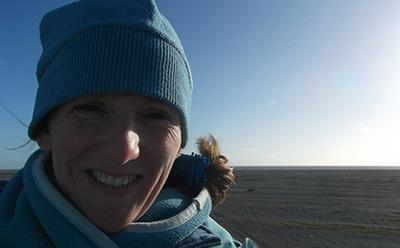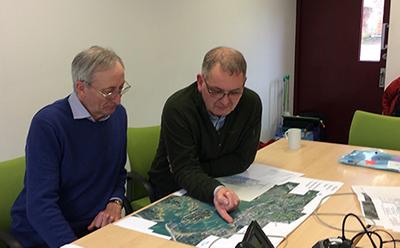
Using science to understand coastal policy in the National Trust
Do you know how much coast is owned by the National Trust 775 miles in England, Wales and Northern Ireland. The National Trust, a national conservation charity who cares for heritage and nurtures nature, has a diverse coastline from rocky cliffs, quiet bays, shingle spits to curious caves. All these coasts need to be managed or monitored in some way, and this means understanding coastal processes in a policy context.
For six months in 2017-2018, I’ve been on NERC Innovation Placement at the National Trust, working with Phil Dyke, the national specialist on coastal and marine issues. I’ve had the opportunity to look at the coast of Orford Ness, Suffolk, an internationally important nature reserve with a long and complicated military history, which is prone to erosion and flooding. I’ve also been analysing coastal change in Poole Harbour, Dorset, home to Brownsea Island and the Studland peninsula and other open land around Middlebere on the southern side of the harbour.
In England and Wales, coasts are managed through non-statutory policies known as Shoreline Management Plans, which indicate broad policies of managing the coast, from holding the coastline in its present position, to realigning the coast landward and allowing natural processes to occur. The National Trust has its own guidance called Shifting Shores which resonates with Shoreline Management Plans.
Shifting Shores helps manage threats to coasts, such as erosion and flooding and considers ways we can adapt on the coast and work with nature, rather than against it, making sure the coast is accessible for years to come. Part of working with the nature environment is to understand it, and this is where my work has been beneficial.
In working with the National Trust and organising stakeholder meetings, I have analysed coastal processes in Poole Harbour. The northern coast of Poole Harbour houses the major conurbation of Poole. The southern coast could not be more different, with beautiful natural land, some of which the Trust owns.
During my work, I have identified and mapped different coastal landforms, such as beaches and cliffs, and a range of human interventions, such as groynes, seawalls and jetties. Discussing these with stakeholders, responsible for enacting the policies, was extremely useful as they understand how coasts change and what role or function each defence has. Sometimes this caused debate as we shared knowledge and experiences in understanding how a feature evolved, and how it could change in the future.

Working with those who enact policies at the Trust has helped me to greater appreciate the challenges in balancing policies with practice. For example, as Shifting Shores indicates a shift towards a more natural coastline, away from one which is defended it can result in debate between the Trust and stakeholders. This has been seen as Middle Beach, Studland where the sea defences, which protect a cafe, are reaching the end of their lives. This has lead to discussions between the Natural Trust and the local community to devise a route forward. This is not always easy as different people and stakeholders have varying passions about their coast and envisage alternative futures.
Shoreline Management Plans and Shifting Shores provide challenges to the National Trust and local authorities who manage the coast. Behind this, there is a strong evidenced-based science, which is updated as the coast changes. In managing 775 miles of coast, the National Trust strives to balance nature and need, to ensure the coast is open for ever, for everyone.
Dr Sally Brown,Senior Research Fellow in the Faculty of Engineering and the Environment, is a coastal geomorphologist and has spent six months understanding coastal change with the National Trust.